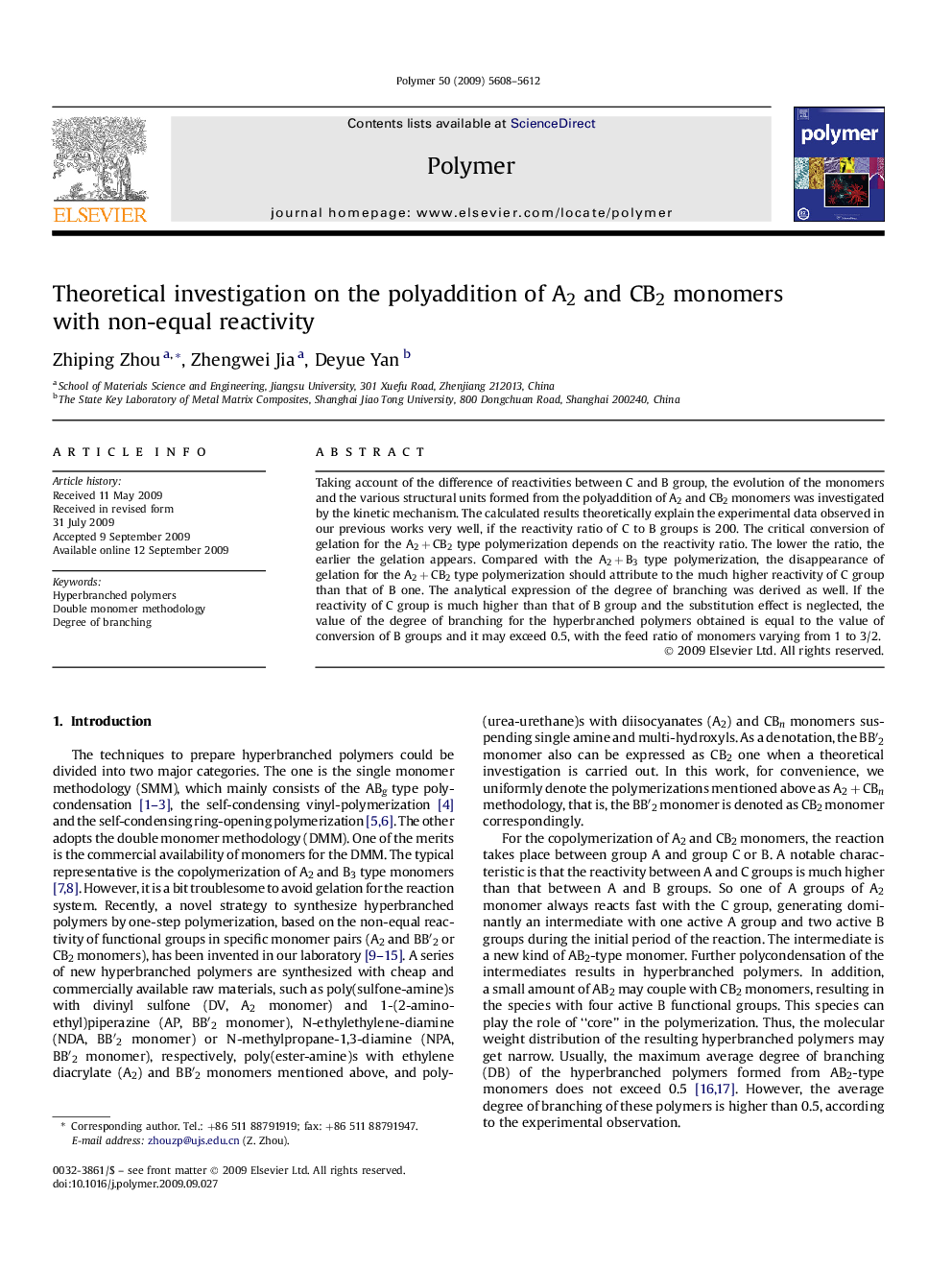| Article ID | Journal | Published Year | Pages | File Type |
|---|---|---|---|---|
| 5185747 | Polymer | 2009 | 5 Pages |
Taking account of the difference of reactivities between C and B group, the evolution of the monomers and the various structural units formed from the polyaddition of A2 and CB2 monomers was investigated by the kinetic mechanism. The calculated results theoretically explain the experimental data observed in our previous works very well, if the reactivity ratio of C to B groups is 200. The critical conversion of gelation for the A2Â +Â CB2 type polymerization depends on the reactivity ratio. The lower the ratio, the earlier the gelation appears. Compared with the A2Â +Â B3 type polymerization, the disappearance of gelation for the A2Â +Â CB2 type polymerization should attribute to the much higher reactivity of C group than that of B one. The analytical expression of the degree of branching was derived as well. If the reactivity of C group is much higher than that of B group and the substitution effect is neglected, the value of the degree of branching for the hyperbranched polymers obtained is equal to the value of conversion of B groups and it may exceed 0.5, with the feed ratio of monomers varying from 1 to 3/2.
Graphical abstractDownload full-size image
